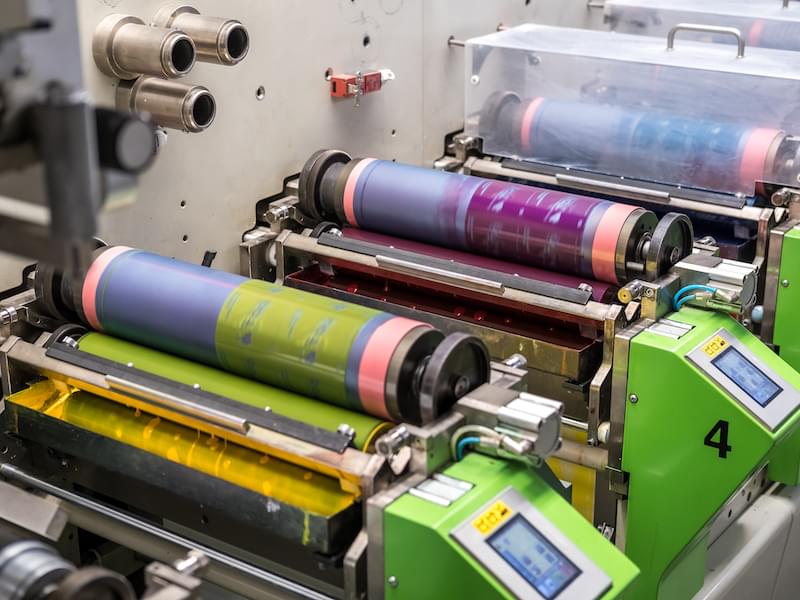Technology developments are at the forefront of flexographic printing markets with equipment and consumable manufacturers being impacted. These developments are in the form of increased digitalization, automation and inline finishing enhancements that are reducing cost and addressing changing market requirements. At the same time, purchasing habits are continuing to change, including an increase in product segmentation, mass customization and personalization, which is affected by the growth of each of the subsequent generational population segments. This will continue to drive the need for shorter, more customized manufacturing runs in consumer goods and packaging over the next five years.
Based on these trends,
The Future of Flexographic Printing to 2027, a new research report from Smithers, has identified an increase in growth in global flexographic output through 2027, during a period of uncertainty and change. Global flexographic output is expected to grow from $172.15 billion in 2022 to a projected total of $188.88 billion in 2027, with a compound annual growth rate (CAGR) of 1.9% across a broad range of applications.
Regional leaders
Asia will see a 4.3% CAGR, followed by Eastern Europe at 3.4%, and Latin America at 2.0%. However, there could be some adjustment to the Eastern Europe growth as a result of the current conflict. New flexo press sales are projected to increase at 1.4% through 2027, to a value $1.62 billion on a total volume of 1,469 units in addition to a active second hand and press enhancement and refurbishment sector. An increase in global consumable sales will result in a 2.8% CAGR in flexo printing ink sales to a value of $6.86 billion, a 3.3% increase in flexo plates to a value of $1.730 billion and a 4.6% increase in sleeves sales across that same period to a value of $33.6 million.
Asia’s output will continue to be the largest at $77.94 billion, with India’s growth rate surpassing China during this period, with India projected with the largest increase at 6.9% and China seeing a 5.0% growth rate. Population density and common language in these regions are the perfect fit for the cost, performance and long run capabilities of flexo. These higher growth rates are followed by Eastern Europe at 2.2% and Latin America at 2.0%. This growth can be attributed to the expanding middle class and the accompanying rise in purchasing power.
The more established markets in the advanced economic western regions including North America and Western Europe will remain flat, primarily due to continued reduction in demand of certain products, including newspapers and envelopes as a result of internet application replacement; and bags and sacks due to market and regulatory pressures around sustainable practices.
Regulations
Governmental regulations continue to increase across the globe. In the US, environmental regulations on atmospheric and effluent waste have been in place for decades, in China there has been an ongoing effort beginning in 2013 to reduce atmospheric pollution with benchmark targets that were to be met by 2017 and beyond. Even in newly industrialized areas like Latin America and Africa government policies are starting to take hold promoting renewable and efficient recyclable packaging. All of these efforts will result in an increased drive to find new sustainable forms of packaging and packaging materials developed with renewable resources. This will drive new developments in flexo equipment, inks and substrates.
Flexographic output and trends
Flexographic output is growing across most application segments, except newspapers which are still declining and bags & sacks where it is affected by ecologically driven regulations. More productive, cost effective equipment and consumables are challenging the rise of digital print, especially electrophotographic. This movement can be seen in label, flexible packaging and carton production.
Flexo continues to be the most cost-effective solution for mid to long run printed output, especially with the increase in quality and continued development in digitalizing the equipment. These efforts include development efforts in press, inks, anilox rollers, plates, sleeves and process automation and control, combined with an increase in hybrid and purpose-built press configurations. These efforts are designed to increase quality and reduce the need for increasingly hard to find skilled labor, cost and time to market.
Impact of digital electrophotography and production inkjet
Developments in digital electrophotography and production Inkjet will continue to increase market pressures on flexo in the medium to long term, to address changing consumer demand. To help mitigate that threat, and address the increasing desire for shorter runs, there has been a drive toward increased digitalization of the flexographic process. This digitalization is having a positive impact resulting in the replacement of a less productive equipment installed base.
Ink and paper manufacturing
Ink manufacturing is evolving to provide more eco-friendly inks and manufacturing processes and comply with new local and global regulations. While paper and plastics manufacturers are developing substrates and solutions that can better fit the model of reduce, reuse and recycle.
